Qiuzhuo Chen
Doubly-Irregular Repeat-Accumulate Codes over Integer Rings for Multi-user Communications
Oct 04, 2022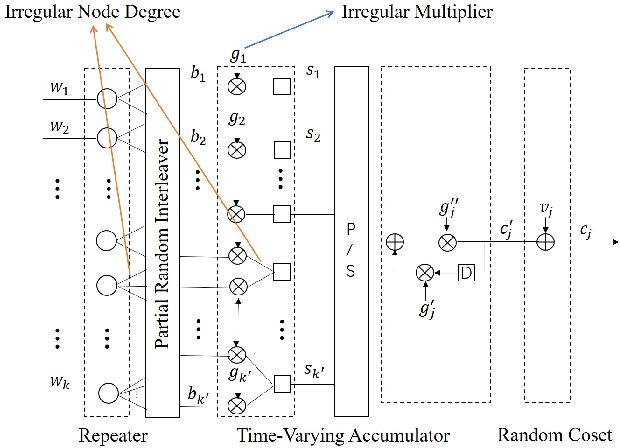
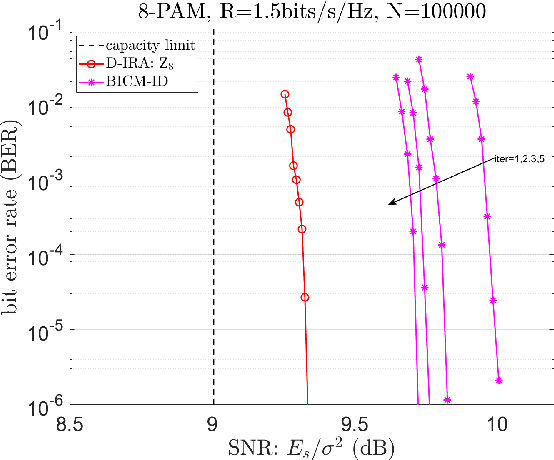
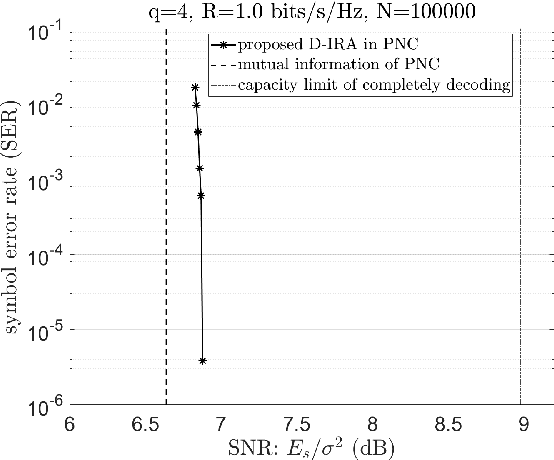
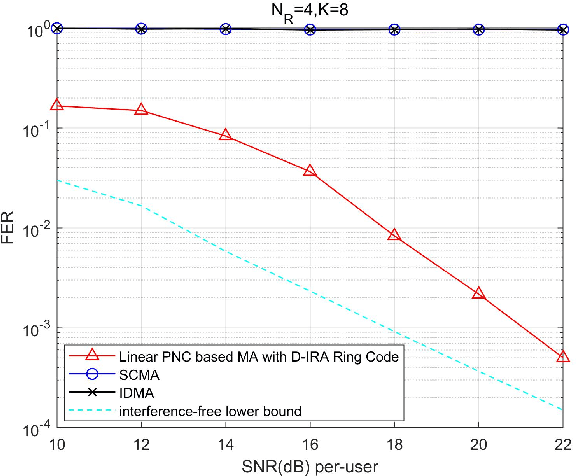
Abstract:Structured codes based on lattices were shown to provide enlarged capacity for multi-user communication networks. In this paper, we study capacity-approaching irregular repeat accumulate (IRA) codes over integer rings $\mathbb{Z}_{2^{m}}$ for $2^m$-PAM signaling, $m=1,2,\cdots$. Such codes feature the property that the integer sum of $K$ codewords belongs to the extended codebook (or lattice) w.r.t. the base code. With it, \emph{% structured binning} can be utilized and the gains promised in lattice based network information theory can be materialized in practice. In designing IRA ring codes, we first analyze the effect of zero-divisors of integer ring on the iterative belief-propagation (BP) decoding, and show the invalidity of symmetric Gaussian approximation. Then we propose a doubly IRA (D-IRA) ring code structure, consisting of \emph{irregular multiplier distribution} and \emph{irregular node-degree distribution}, that can restore the symmetry and optimize the BP decoding threshold. For point-to-point AWGN channel with $% 2^m $-PAM inputs, D-IRA ring codes perform as low as 0.29 dB to the capacity limits, outperforming existing bit-interleaved coded-modulation (BICM) and IRA modulation codes over GF($2^m$). We then proceed to design D-IRA ring codes for two important multi-user communication setups, namely compute-forward (CF) and dirty paper coding (DPC), with $2^m$-PAM signaling. With it, a physical-layer network coding scheme yields a gap to the CF limit by 0.24 dB, and a simple linear DPC scheme exhibits a gap to the capacity by 0.91 dB.
On Lattice-Code based Multiple Access: Uplink Architecture and Algorithms
Oct 03, 2022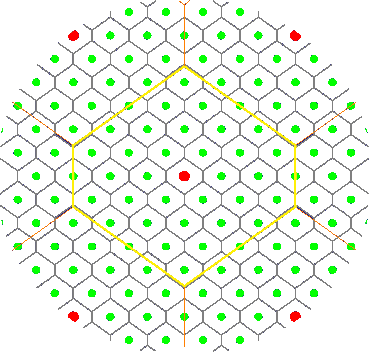
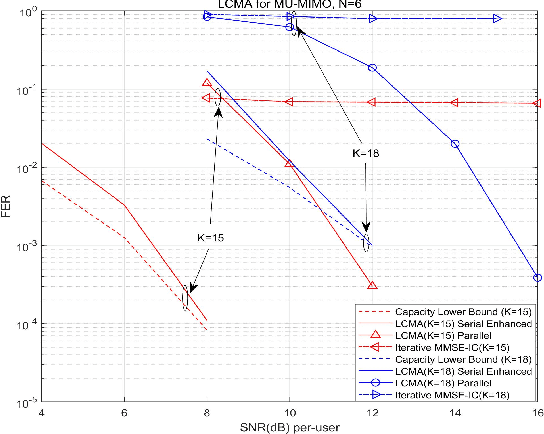

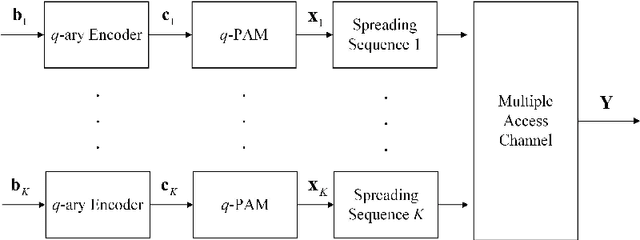
Abstract:This paper studies a lattice-code based multiple-access (LCMA) framework, and develops a package of processing techniques that are essential to its practical implementation. In the uplink, $K$ users encode their messages with the same ring coded modulation of $2^{m}$-PAM signaling. With it, the integer sum of multiple codewords belongs to the $n$-dimension lattice of the base code. Such property enables efficient \textit{algebraic binning} for computing linear combinations of $K$ users' messages. For the receiver, we devise two new algorithms, based on linear physical-layer network coding and linear filtering, to calculate the symbol-wise a posteriori probabilities (APPs) w.r.t. the $K$ streams of linear codeword combinations. The resultant APP streams are forwarded to the $q$-ary belief-propagation decoders, which parallelly compute $K$ streams of linear message combinations. Finally, by multiplying the inverse of the coefficient matrix, all users' messages are recovered. Even with single-stage parallel processing, LCMA is shown to support a remarkably larger number of users and exhibits improved frame error rate (FER) relative to existing NOMA systems such as IDMA and SCMA. Further, we propose a new multi-stage LCMA receiver relying on \emph{generalized matrix inversion}. With it, a near-capacity performance is demonstrated for a wide range of system loads. Numerical results demonstrate that the number of users that LCMA can support is no less than 350\% of the length of the spreading sequence or number of receive antennas. Since LCMA relaxes receiver iteration, off-the-shelf channel codes in standards can be directly utilized, avoiding the compatibility and convergence issue of channel code and detector in IDMA and SCMA.
 Add to Chrome
Add to Chrome Add to Firefox
Add to Firefox Add to Edge
Add to Edge